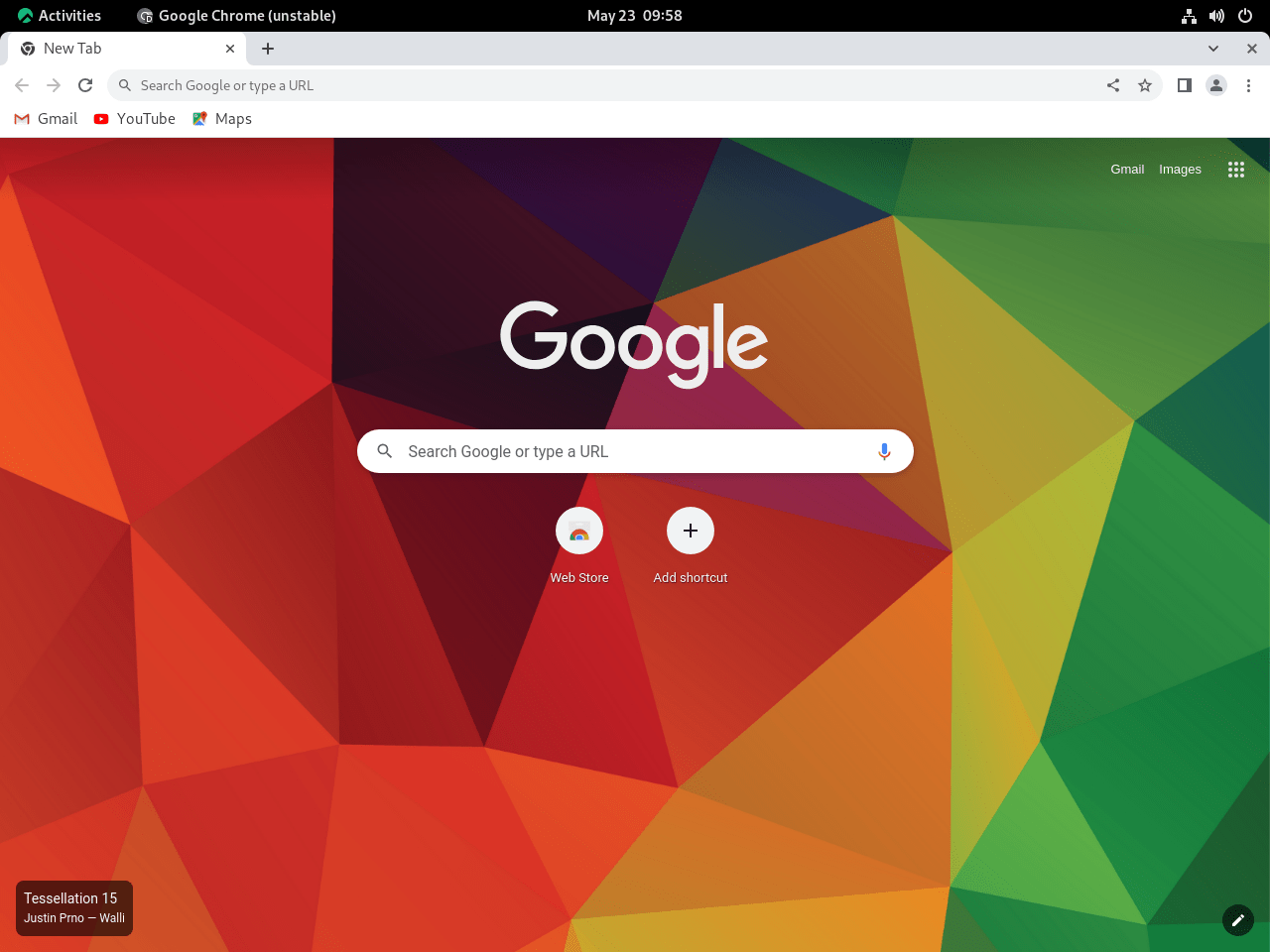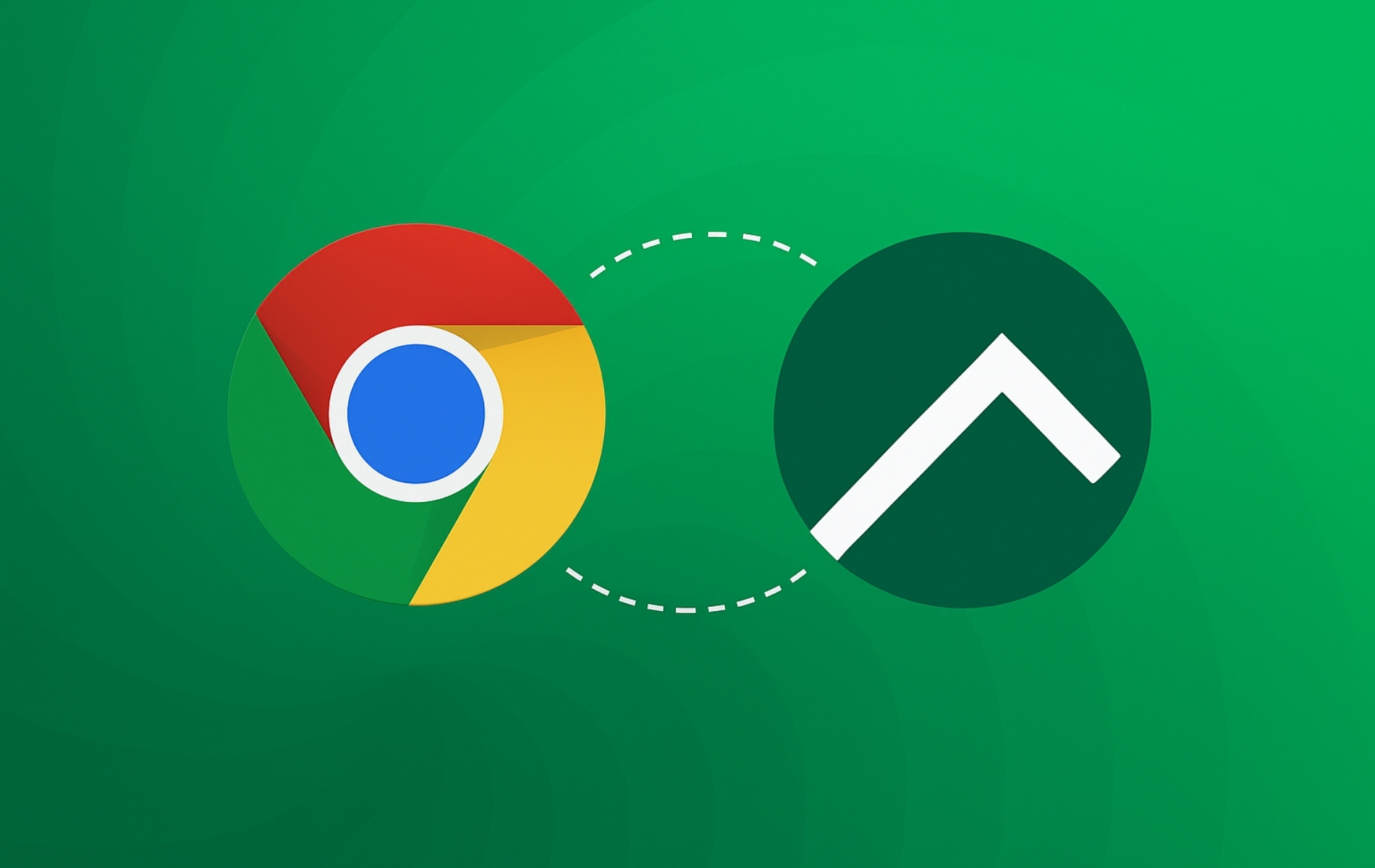Google Chrome stands out as a leading web browser, renowned for its speed, security, and extensive feature set. Technical highlights of Chrome include its V8 JavaScript engine for rapid script processing, sandboxing technology for enhanced security, and seamless synchronization across devices using a Google account. Additionally, Chrome supports a vast ecosystem of extensions, offering users the ability to customize and enhance their browsing experience.
For users on Rocky Linux 10, 9, or 8, installing Google Chrome can be achieved through multiple methods. You can utilize the command-line terminal to download and install Google’s official RPM packages, available in Stable, Beta, or Unstable (Dev) builds. Alternatively, Flatpak with Flathub offers installations of the Stable or Unstable builds. This guide details both approaches and covers Rocky 10-specific issues including GPG key import restrictions and missing GNOME application icons.
Method 1: Install Google Chrome via Official RPM
Update Rocky Linux System Before Google Chrome Installation
Before installing Google Chrome, update your system packages to avoid potential conflicts during installation and maintain optimal system performance. Next, run the following command:
sudo dnf upgrade --refreshThis command updates all packages in your Rocky Linux system, thereby ensuring a smooth installation process.
Import Google Chrome GPG Key
As a Google Chrome user, you can choose from three distinct variants of the browser: Stable, Beta, and Unstable. Generally, the Stable version is recommended for most users, while the Beta and Unstable versions are more suited for advanced users willing to experiment and explore new features.
Before initiating the installation process, we must import the GPG key, which helps validate the software package authenticity. However, Google’s signing key contains SHA-1 signatures that conflict with Rocky Linux 9 and 10 crypto policies. Notably, RHEL 10 (and Rocky 10) completely removed SHA-1 support in May 2024.
Rocky Linux 10 and 9 require the –nodigest –nosignature workaround for GPG key import due to SHA-1 restrictions. Rocky Linux 8 still supports SHA-1 and does not need these flags. Package verification remains secure on all versions because Google signs packages with RSA/SHA-512.
Therefore, for Rocky Linux 9 and 10 users, download the key locally and import with flags that skip SHA-1 signature verification:
curl -O https://dl.google.com/linux/linux_signing_key.pub
sudo rpm --import --nodigest --nosignature linux_signing_key.pubThis approach only bypasses verification for the key import itself. However, package installations still verify using RSA/SHA-512 signatures (which Google uses for actual packages), so this method remains secure. Additionally, the warnings you might see are about expired SHA-1 subkeys in the keyring bundle, not the active signing key.
Rocky Linux 8 users can import the key directly without extra flags:
sudo rpm --import https://dl.google.com/linux/linux_signing_key.pubInstall Google Chrome via DNF Command
Next, install the Google Chrome browser after ensuring your system is up-to-date and the GPG key has been imported. Choose between the stable, beta, or unstable versions using the respective commands below:
sudo dnf install https://dl.google.com/linux/direct/google-chrome-stable_current_x86_64.rpm -ysudo dnf install https://dl.google.com/linux/direct/google-chrome-beta_current_x86_64.rpm -ysudo dnf install https://dl.google.com/linux/direct/google-chrome-unstable_current_x86_64.rpm -yPlease note that the beta and unstable versions are not recommended for everyday use. However, see below for an alternative installation method.
Alternative: Create Repository File Manually
If you prefer more control over repository configuration, you can create the Google Chrome repository file manually before installation. This alternative approach provides better transparency and works well for automation scenarios.
Create the repository file:
sudo tee /etc/yum.repos.d/google-chrome.repo <<'EOF'
[google-chrome]
name=Google Chrome
baseurl=https://dl.google.com/linux/chrome/rpm/stable/$basearch
enabled=1
gpgcheck=1
gpgkey=https://dl.google.com/linux/linux_signing_key.pub
EOFUpdate the package list and install:
sudo dnf update
sudo dnf install google-chrome-stable -ySubsequently, this method separates repository configuration from package installation, making it easier to verify setup before installing Chrome.
Method 2: Install Google Chrome via Flatpak and Flathub
In this section, we will focus on using Flatpak and Flathub to install Google Chrome on Rocky Linux 10, 9, or 8 as an alternative installation method.
Flatpak is a universal package management system that aims to offer applications that work on any Linux distribution. It encapsulates applications in isolated environments, minimizing potential conflicts with system libraries. Complementing Flatpak is Flathub, which is a centralized repository for Flatpak applications. In essence, it functions as a one-stop shop, hosting many applications readily available for installation.
Enable Flathub for Google Chrome
Before starting the installation process, we must ensure the Flathub repository is enabled. Doing so allows us to access and install applications hosted on Flathub, including Google Chrome.
To enable Flathub, you need to execute the following command in your terminal:
sudo flatpak remote-add --if-not-exists flathub https://flathub.org/repo/flathub.flatpakrepoThis command enables the Flathub repository in your Flatpak configuration, granting you access to an extensive range of applications.
Install Google Chrome via Flatpak Command
Once Flathub is enabled, we can proceed with installing Google Chrome on Rocky Linux 10, 9, or 8. The flatpak install command comes in handy for this operation.
Install Google Chrome stable or unstable
The stable version of Google Chrome is the most recommended for regular use. It provides a seamless browsing experience with tested and proven features. Therefore, to install the stable version, you need to run the following command in your terminal:
sudo flatpak install flathub com.google.Chrome -yAlternatively, to install the unstable version, execute this command in your terminal:
sudo flatpak install flathub com.google.ChromeDevPlease note that the Flatpak and Flathub systems do not support beta versions of Google Chrome. Consequently, only the stable and unstable versions are available for installation through this method.
Initiating Google Chrome via CLI or GUI
Once you have installed Google Chrome on your Rocky Linux system, launch it using either CLI commands or the GNOME application menu. The method you choose depends on your preference and whether you run a desktop or headless server environment.
CLI Commands to Launch Google Chrome Browser
For users comfortable with the terminal or running headless servers, the command-line interface provides the most direct launch method. Moreover, each installed Chrome version has a unique command.
Stable Version
To open the stable version of Google Chrome installed via DNF, the command you would use is:
google-chromeIn contrast, the command to launch the stable version of Google Chrome installed via Flatpak is:
flatpak run com.google.ChromeBeta Version
Next, the command to launch Google Chrome Beta installed via DNF only is:
google-chrome-betaUnstable Version
For those who installed the unstable build of Google Chrome, the corresponding command is:
google-chrome-unstableFinally, to launch the unstable version of Google Chrome installed via Flatpak, the command you would use is:
flatpak run com.google.ChromeDevGUI Method to Launch Google Chrome Browser
The steps to launch Google Chrome through the GUI are as follows:
- Initiate Activities: Depending on your Linux distribution, this could be as simple as hitting the Super (Windows) key or clicking the Activities option, usually found at the top-left corner of your screen.
- Access Applications: Next, once you have initiated the activities overview, proceed to view all your installed applications by clicking on the grid icon labeled Show Applications at the bottom of the screen.
- Launch Google Chrome: Finally, you should now see an overview of all your applications. Look for the Google Chrome icon and click it to launch the browser. If you have installed multiple versions (stable, beta, or unstable), each one will be separately listed, e.g., Google Chrome (Stable), Google Chrome (Beta), or Google Chrome (Unstable). Click on the desired version to launch it.


Troubleshoot Rocky Linux 10 Installation Issues
Fix Missing Google Chrome Icon in GNOME
Rocky Linux 10 users may notice Google Chrome appears in the application menu with a generic placeholder icon instead of the familiar Chrome logo. This issue occurs because Rocky 10's default GNOME icon theme does not include the Chrome icon.
To resolve this, download the official Chrome SVG logo and update the GTK icon cache:
sudo curl -L https://www.google.com/chrome/static/images/chrome-logo.svg -o /usr/share/icons/hicolor/scalable/apps/google-chrome.svg
sudo gtk-update-icon-cache /usr/share/icons/hicolorSubsequently, log out of GNOME and log back in. Chrome now appears with its correct icon in the application menu.
Additional Google Chrome Commands
Beyond installation, understanding how to properly manage Google Chrome on Rocky Linux involves keeping the browser updated, removing it if necessary, and learning how to disable or enable the repository for future installations.
Update Google Chrome
While Google Chrome typically notifies users of available updates if installed through the DNF package manager, manually checking for updates remains a good practice nonetheless.
In your terminal, run the following command:
sudo dnf upgrade --refreshBy executing the command above, you are prompting your system to check for and apply any available updates.
Meanwhile, for those who have installed Google Chrome using Flatpak, the following command will refresh all packages installed by Flatpak, including Google Chrome:
sudo flatpak updateRemove Google Chrome
For users who decide they no longer require Google Chrome, it can be uninstalled easily. However, the command you will need to use will depend on the version of Google Chrome you have installed (stable, beta, or unstable).
DNF Google Chrome Remove Commands
Here is how you can remove Google Chrome Stable:
sudo dnf remove google-chrome-stableSubsequently, if you have installed either the beta or unstable versions of Google Chrome, use the corresponding commands:
sudo dnf remove google-chrome-betasudo dnf remove google-chrome-unstableDisabling and Enabling Google Chrome Repositories
If you are not actively using Google Chrome, it might be beneficial to temporarily disable the repositories. Doing so prevents your system from checking for Google Chrome updates during system updates, thus saving resources.
You can disable all Google Chrome repositories with the following command:
sudo dnf config-manager --set-disabled google-chrome*This command will collectively disable all Google Chrome repositories. However, to disable a specific one, you must first identify its full name. To accomplish this, you can list your imported repositories:
dnf repolist | grep chromeOnce you have identified the full name of the repository you want to disable, you can replace google-chrome* with it in the command. For example, to disable the beta repository only, use:
sudo dnf config-manager --set-disabled google-chrome-betaIf you decide later that you would like to install Google Chrome again, you can easily re-enable the repositories. Below is the command to enable all Google Chrome repositories:
sudo dnf config-manager --set-enabled google-chrome*Again, to enable a specific repository, replace google-chrome* with the full name of the repository you wish to enable.
Flatpak Google Chrome Remove Commands
For those who installed Google Chrome using Flatpak, the removal process differs slightly:
sudo flatpak uninstall com.google.ChromeSimilarly, for those who installed the unstable version:
sudo flatpak uninstall com.google.ChromeDevFinal Thoughts
In summary, Google Chrome installs cleanly on Rocky Linux 10, 9, and 8 through official RPM packages or Flatpak. Rocky 10 and 9 users must handle SHA-1 GPG key restrictions using the --nodigest --nosignature import flags, while Rocky 10 specifically requires the GNOME icon fix to display Chrome correctly in the application menu. Overall, the direct RPM installation method automatically configures Google's repository for future updates, whereas the manual repository file approach provides better transparency and control for automation scenarios.


